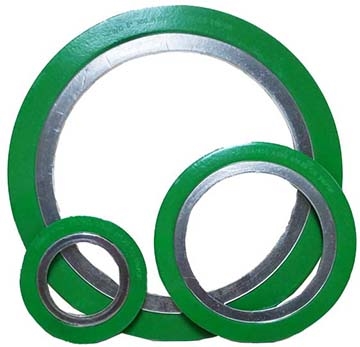GASKETS
Gaskets are critical sealing components that prevent leaks by creating a barrier between mating surfaces in piping systems, ensuring safe and efficient fluid containment.
Manufactured from various flexible materials, gaskets compensate for surface irregularities and maintain seals under varying pressure and temperature conditions.

A gasket is a precisely cut sealing element, typically made from flexible materials like rubber, graphite, or metal composites, designed to fit between two mating surfaces. These essential components serve as barriers to prevent leakage of liquids or gases in piping systems while accommodating minor surface imperfections. Gaskets work in conjunction with fasteners to create compression seals that maintain integrity through thermal cycling, vibration, and pressure fluctuations. From simple rubber rings to complex spiral-wound designs, gaskets are engineered to meet specific application requirements in industries ranging from residential plumbing to high-pressure chemical processing.
| Type | Description | Typical Applications |
|---|---|---|
| Rubber Gaskets | Flexible elastomeric materials (EPDM, Nitrile, Neoprene) | Water systems, low-pressure applications |
| Compressed Fiber | Cellulose or aramid fibers with binder compounds | General purpose flange connections |
| Spiral Wound | Alternating metal and filler layers in spiral configuration | High-pressure/temperature flange joints |
| Metal Jacketed | Soft filler material enclosed in metal casing | Heat exchangers, pressure vessels |
| PTFE Gaskets | Pure or filled PTFE for chemical resistance | Chemical processing, corrosive media |
| Graphite Gaskets | Flexible graphite sheets, often reinforced | High-temperature applications |
| Parameter | Specification |
|---|---|
| Size Range | 1/4" to 60" (DN8 to DN1500) |
| Pressure Rating | Vacuum to 10,000 psi (690 bar) |
| Temperature Range | -50°F to 1800°F (-45°C to 982°C) |
| Thickness | 0.5mm to 6mm (0.02" to 0.25") |
| Compression Range | 15% to 40% depending on material |
| Standards | ASME B16.20, B16.21, API 6A, DIN, EN |
| Surface Finish | Ra 125-250 µin (3.2-6.3 µm) recommended |